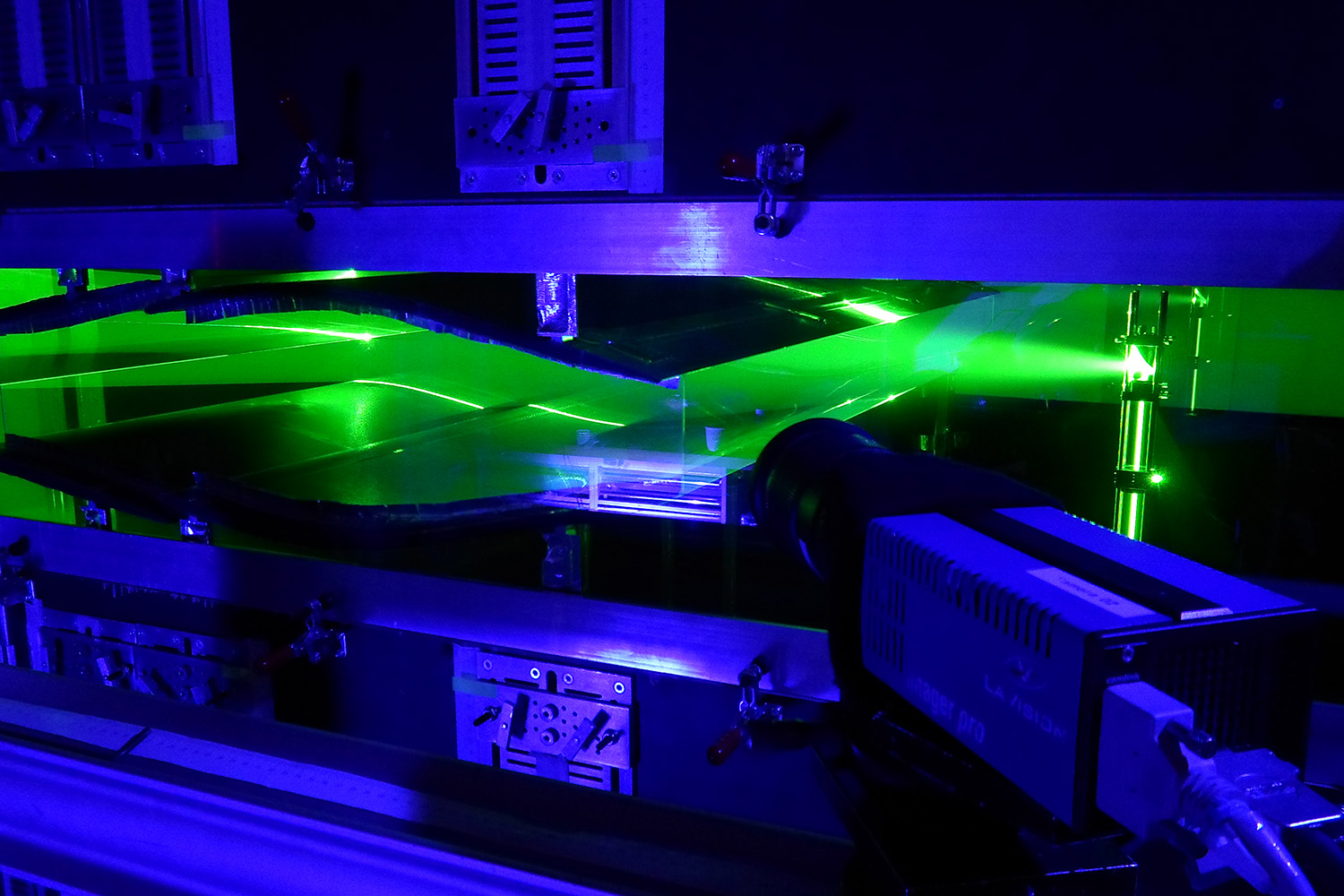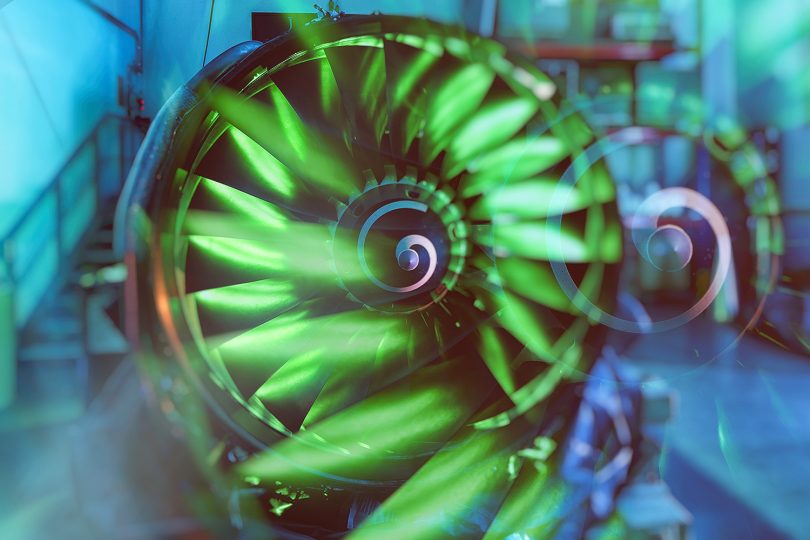Picture of the Month: Flow field measurement in the wind tunnel Better understanding of turbulence properties – important for aviation research
The Picture of the Month for August shows an impression of a flow field measurement using Particle Image Velocimetry (PIV). Very fine droplets are added to the flow – in this case the air flow in a wind tunnel – as ‘tracers’, which are then illuminated in a section by a powerful neodymium YAG laser. The laser makes the movement of the tracers visible, which is then recorded and analysed using high-resolution cameras. For the researchers at the Institute of Fluid Mechanics at TU Braunschweig, such flow field measurements are an indispensable means of measuring flows down to the smallest detail. This research is important, for example, in the SE2A Cluster of Excellence for Sustainable Aviation.

Strömungsfeldmessung mit der “Particle Image Velocimetry” (PIV). Bildnachweis: Peter Scholz, Wiebke Breitenstein
Typical challenges in flow measurement are that many phenomena are three-dimensional and highly non-linear. These phenomena are sensitive to changes in the surrounding conditions, also known as the ‘butterfly effect’. This is especially true for turbulent flows. An accurate understanding of the intrinsic properties of turbulence and the phenomena that lead to turbulence is key to influencing the efficiency and stability of flows in engineering and nature. PIV measurements provide a detailed picture of the flow structure. The resulting velocity fields are then further analysed using statistical methods.
The image shows the high-resolution camera in the foreground and the light section illuminated by the green neodymium YAG laser in the measurement section. The camera looks at the light section from a specific angle. To the left, outside the visible image, is a second camera that also images the light section. The two cameras thus provide a stereoscopic image from which all components of the speed can be determined.
A single exposure is extremely short (about 5 nanoseconds), so the complex flow structures are ‘frozen’ in this image. Typically, many individual images (‘snapshots’) are combined to separate the mean flow field from the turbulence components.
With new acquisitions at the Institute of Fluid Mechanics, such measurements should also be possible in the future with high time resolution (up to 10 kHz) and in a tomographic, i.e. layer-by-layer, setup with four cameras. The researchers hope that the data will provide higher-order statistics and Lagrangian observations, for example, which can shed light on the inner nature of flows.
This research provides information about the cause of frictional resistance, for example. The findings can be used to reduce the drag of aeroplanes. “Together with a high time resolution, the dynamics of the flow can also be understood, which in turn plays an important role in the reaction to gusts and the associated aerodynamic loads. Ultimately, the drag and weight of the aircraft can be reduced,” says Dr. Peter Scholz from the Institute of Fluid Mechanics.

